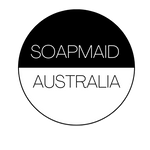
Cocoa Butter vs Palmkernel Stearin
Cocoa butter and palm kernel stearin are two different fats used in various industries, including skincare, food, and cosmetics. They have distinct compositions and properties, serving different purposes based on their unique characteristics.
Cocoa Butter:
Composition: Cocoa butter is a natural fat extracted from cocoa beans, primarily found in the seeds of the cocoa tree. It contains a high proportion of saturated fats, mainly composed of stearic acid and oleic acid, along with smaller amounts of palmitic acid.
Properties:
-
Melting Point: Cocoa butter has a relatively high melting point, around 93-100°F (34-38°C), making it solid at room temperature and melting upon contact with the skin.
-
Texture and Feel: It has a rich, creamy texture and is well-known for its luxurious, moisturizing properties. Cocoa butter is often used in skincare products like lotions, creams, and lip balms due to its emollient nature, which helps soften and hydrate the skin.
-
Applications: Apart from skincare, cocoa butter is widely used in the chocolate and confectionery industry as a key ingredient in making chocolate due to its unique melting characteristics and taste.
Palm Kernel Stearin:
Composition: Palm kernel stearin is derived from the kernels (seeds) of oil palm trees. It is a fractionated form of palm kernel oil obtained through a process that separates different components of the oil based on their melting points. Stearin is the harder fraction of the oil.
Properties:
-
Melting Point: Palm kernel stearin has a higher melting point compared to regular palm oil but lower than cocoa butter. It tends to solidify at a temperature higher than room temperature and remains relatively stable under varying temperatures.
-
Texture and Applications: Due to its higher melting point and hardness, palm kernel stearin is often used in the production of soaps, candles, margarine, and as a stabilizing agent in various food products. In soap making, it helps provide hardness and stability to the final product.
-
Versatility: Palm kernel stearin is versatile and finds applications in industries beyond skincare. It serves various purposes in food processing and manufacturing due to its functional properties.
Cost Comparison:
Generally, palm kernel stearin tends to be more cost-effective compared to cocoa butter. The larger-scale production of palm oil, availability of oil palm plantations in various regions, and its versatile applications contribute to its affordability.
Cocoa butter, on the other hand, is often considered a premium ingredient due to its specific uses in skincare and the intricate extraction process. This can result in higher pricing compared to palm kernel stearin.
